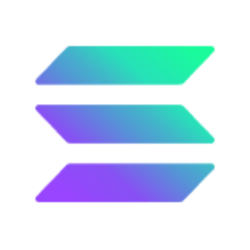MetalCore Migration to Solana Aims to Enhance Gaming with Fast Transactions and Integrated Payment Systems
SOL
SOL/USDT
$3,553,796,337.84
$137.75 / $133.12
Change: $4.63 (3.48%)
+0.0047%
Longs pay
Contents
-
The gaming landscape is shifting as Studio369 transitions its mech shooter title MetalCore to the Solana blockchain, promising enhanced experiences for gamers.
-
This move reflects a growing trend among game developers looking for faster, more scalable blockchain solutions in the competitive gaming market.
-
“Solana’s high throughput will ensure that all in-game actions requiring blockchain interactions will be near-instantaneous,” stated the gaming developer, emphasizing the platform’s capabilities.
Studio369’s MetalCore migrates to Solana, leveraging faster transactions and GameShift platform for in-game purchases, setting a new standard in blockchain gaming.
MetalCore’s Transition to Solana: Insights into the Migration
The transition of MetalCore to the Solana blockchain by Studio369 marks a significant development in the realm of blockchain gaming. By utilizing Solana’s robust infrastructure, the game aims to enhance user engagement with faster transaction speeds—currently averaging about 3,000 transactions per second. This efficiency is critical as it alleviates common delays seen in other blockchain platforms, ensuring a smoother gaming experience for its users. The decision aligns with the broader industry trend of adopting more scalable blockchain solutions to accommodate growing gamer demands and complex gameplay mechanics.
Enhanced Game Mechanics with GameShift Platform
Integral to this migration is Solana Labs’ GameShift platform, which provides essential tools such as a storefront and streamlined payment systems for in-game purchases. As a free-to-play open-world game, MetalCore introduces dynamic features like player-versus-player (PvP) and player-versus-environment (PvE) battles. Players can earn valuable assets through combat, which can then be converted into Web3 assets for trading. This innovation is not only attractive for gamers but also aligns with the increasing inclination towards decentralized ownership in gaming.
Broader Implications for Blockchain Gaming
This strategic migration is reflective of a larger trend in the blockchain space, with various protocols flocking to the Solana network to enhance scalability while minimizing costs. Other projects, such as MetaBlox’s Roam network and Helium, have previously transitioned to Solana, underscoring its growing reputation among developers. According to industry trends, Solana’s ecosystem is expanding rapidly, with its monthly active addresses surpassing 100 million in early October, highlighting its burgeoning user base and increased activity.
Addressing Reliability Concerns
Despite its advancements, the Solana network has faced challenges, particularly with significant periods of downtime that have raised questions regarding its reliability. For instance, the network experienced a notable outage that lasted approximately five hours on February 6, 2024. To combat these issues, the Solana Foundation has plans to implement the Firedancer upgrade, with various iterations rolled out over the next couple of years. This upgrade aims to bolster the network’s infrastructure, ensuring it can support the explosive growth of applications, particularly within the gaming sector.
Conclusion
The migration of MetalCore to the Solana blockchain represents a pivotal moment in the gaming industry, showcasing the importance of scalability, speed, and user experience. As more developers recognize the advantages of Solana’s infrastructure, players can look forward to increasingly sophisticated gaming experiences coupled with decentralized incentives. With enhancements on the horizon, including the Firedancer upgrade, Solana is positioning itself as a leader in the blockchain gaming revolution. This evolution holds promise for both developers and gamers, paving the way for more immersive and engaging gameplay.
Jocelyn Blake
Comments
Yorumlar
Other Articles
Ripple Partners with Japanese Banks to Advance XRP Ledger Amid TVL Challenges
December 30, 2025 at 04:02 PM UTC
Delphi Digital Sees Web2.5 Games Potential with Wemix as GameFi Funding Drops
December 30, 2025 at 06:28 AM UTC
Ethereum Smart Contracts Reach ATH Amid Price Dip: Undervaluation Signals?
December 30, 2025 at 06:14 AM UTC
